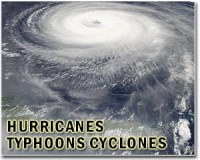 |
Liverpool UK (SPX) Feb 16, 2011 The vast majority of the biological production in the world's oceans occurs within sunlit surface waters - the so-called photic zone. Through the process of photosynthesis, tiny marine plants called phytoplankton use the energy of sunlight to build the carbon-rich organic molecules needed for growth. When they die, a proportion of the organic matter sinks to the ocean depths, where it is used as food by all manner of deep-sea life. "With the exception of chemosynthetic communities living around hydrothermal vents and other chemical energy sources, deep-sea ecosystems are entirely dependent on the supply of organic material from miles above," said Dr Brian Bett of the NOC. "An important question is whether variation in food supply explains patterns of regional seafloor biomass, or whether other oceanic factors such as seafloor relief and bottom water characteristics are responsible," he explained. To help address the issue, the researchers assembled data on the biomass and abundances of species living at the seafloor in different regions. Many of these data were collected during CoML field projects. They then used a computer algorithm called Random Forests to model and predict seafloor standing stocks from biological production in the photic zone, the amount of organic matter exported to the depths, seafloor relief, and bottom water characteristics. "Random Forests uses input data to generate a global picture of seafloor biomass and abundance, learning from its own mistakes as it goes along," explained Dr Bett. The researchers used the algorithm to generate individual and composite maps of predicted global seafloor biomass and abundance of bacteria, small and medium sized animals living on or in the seafloor sediments, as well as larger animals such as crabs and fish. They found a strong positive relationship between surface production and organic matter export, on the one hand, and predicted patterns of seafloor biomass and abundance on the other, with seafloor relief and bottom water characteristics playing secondary but significant regional roles. According to their analysis, seafloor biomass is highest around the poles, and on continental margins, where upwelling waters supply nutrients needed for phytoplankton growth in the photic zone. Values are also high near the equator where the interaction of wind-driven currents causes upwelling. In contrast, they found consistently low seafloor biomass on the central abyssal plains of the major ocean basins. The dominance of different groups of organisms in terms of their abundance or biomass depends on seafloor depth. Smaller-bodied organisms tend to dominate the food limited depths of the ocean. "The Census and associated maps provide important insights into the functioning of deep-sea ecosystems and their role in the global carbon cycle, and will also contribute to evidence-based ocean management," said Dr Bett. "Our study truly highlights the tremendous value and continuing importance of long-term observations and international collaboration in understanding our oceans and their ecosystems." Wei, C.-L. et al. Global patterns and predictions of seafloor biomass using random forests. PLoS One 5(12):e15323. doi:10.1371/journal.pone.0015323
Share This Article With Planet Earth
Related Links - Darwin Today At TerraDaily.com
 Devastation at epicentre of Australian mega-cyclone
Devastation at epicentre of Australian mega-cycloneCardwell, Australia (AFP) Feb 4, 2011 Smashed yachts lay stacked like matchwood near a marina, while the ruined husk of a church, its walls sheered off as if from tank fire, stood vigil amidst the ruins of Cyclone Yasi. As rescuers struggled Friday to get to areas worst hit by Severe Tropical Cyclone Yasi's 290-kilometre (180-mile) per hour winds, they witnessed scenes of destruction that rival a war zone. Although rescuers ... read more |
|
| The content herein, unless otherwise known to be public domain, are Copyright 1995-2010 - SpaceDaily. AFP and UPI Wire Stories are copyright Agence France-Presse and United Press International. ESA Portal Reports are copyright European Space Agency. All NASA sourced material is public domain. Additional copyrights may apply in whole or part to other bona fide parties. Advertising does not imply endorsement,agreement or approval of any opinions, statements or information provided by SpaceDaily on any Web page published or hosted by SpaceDaily. Privacy Statement |